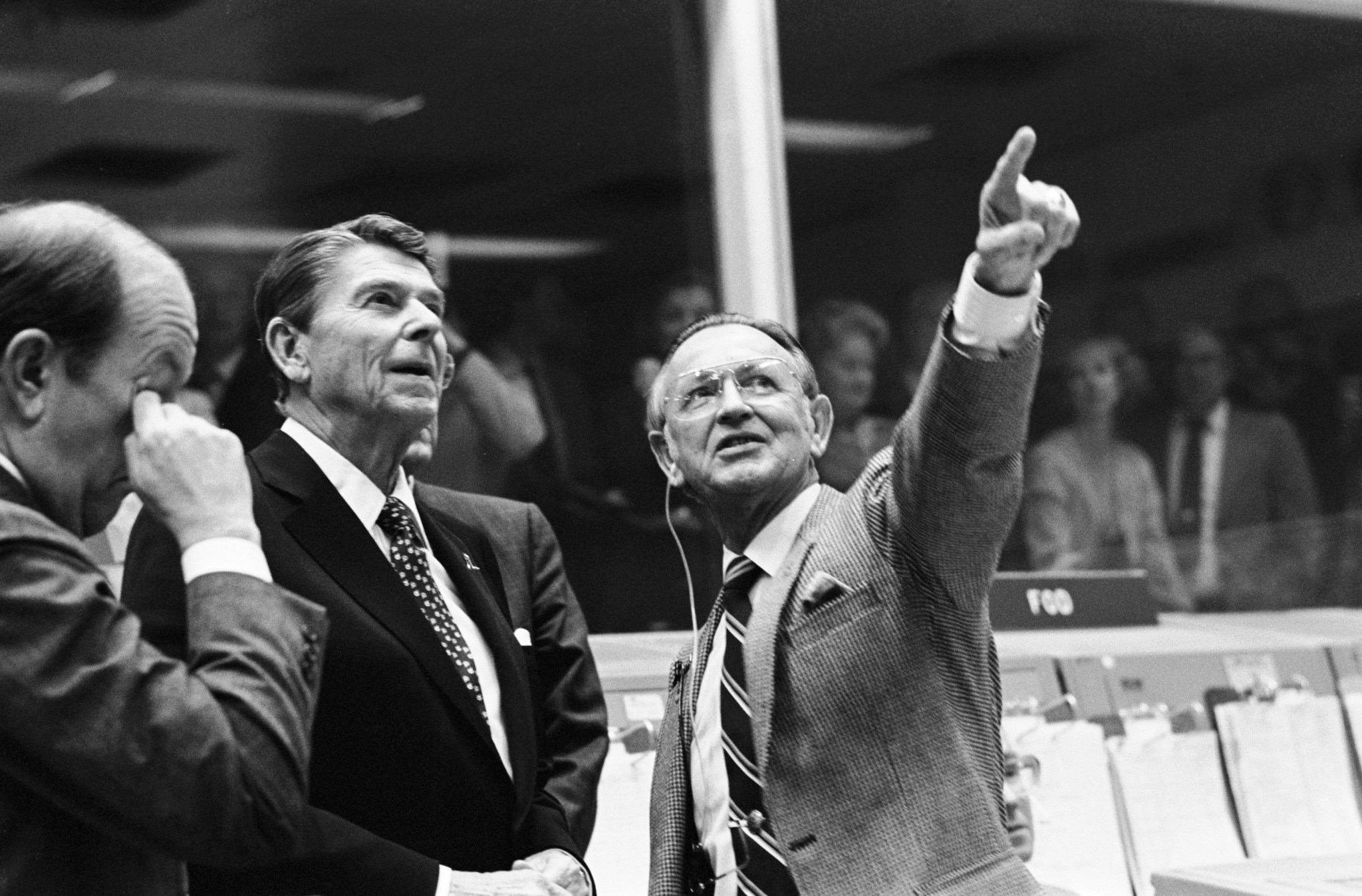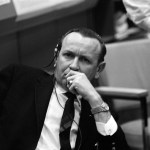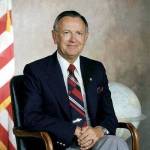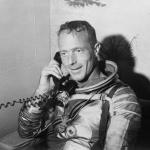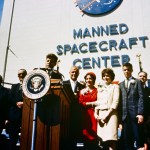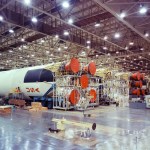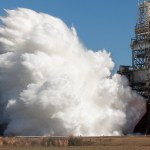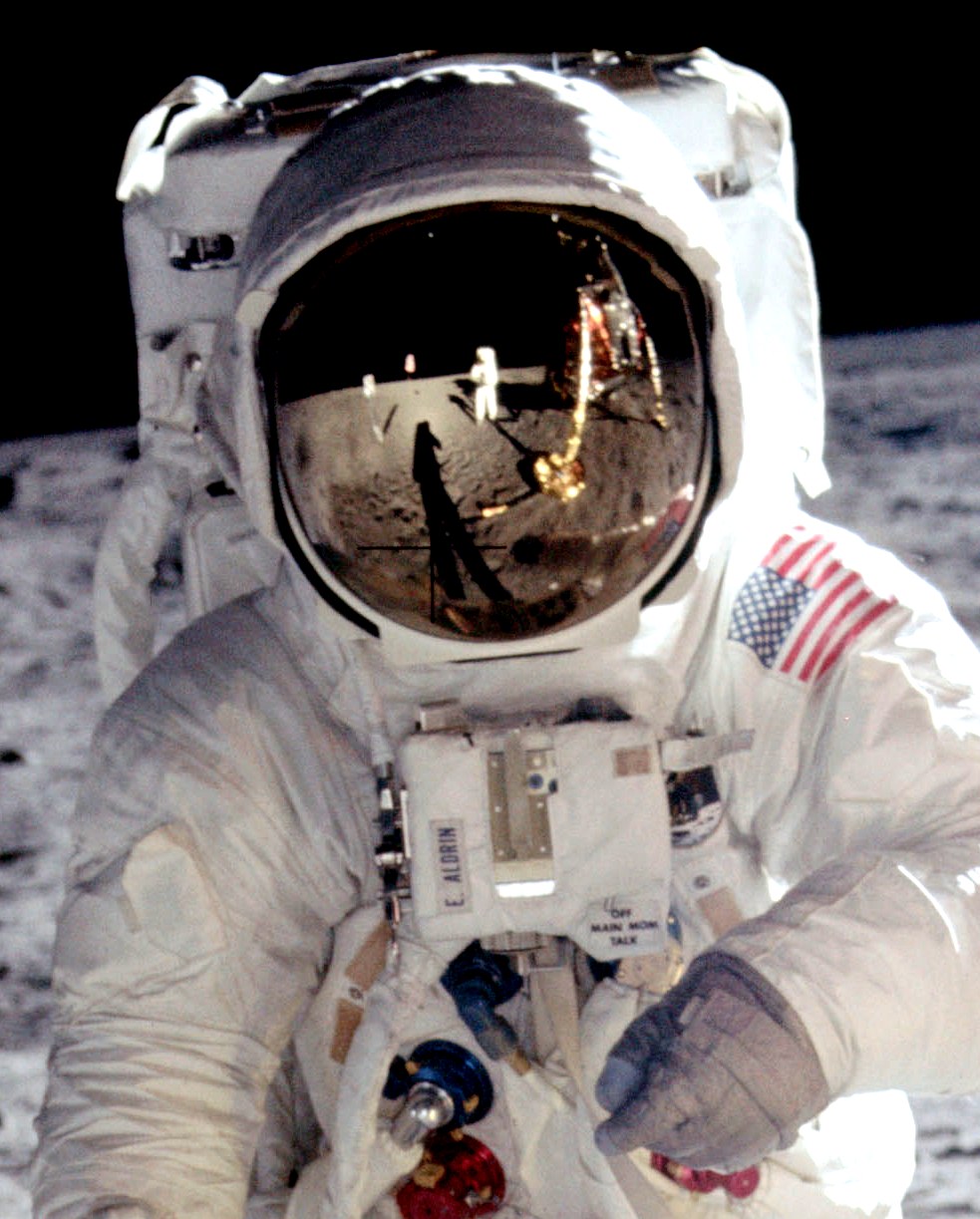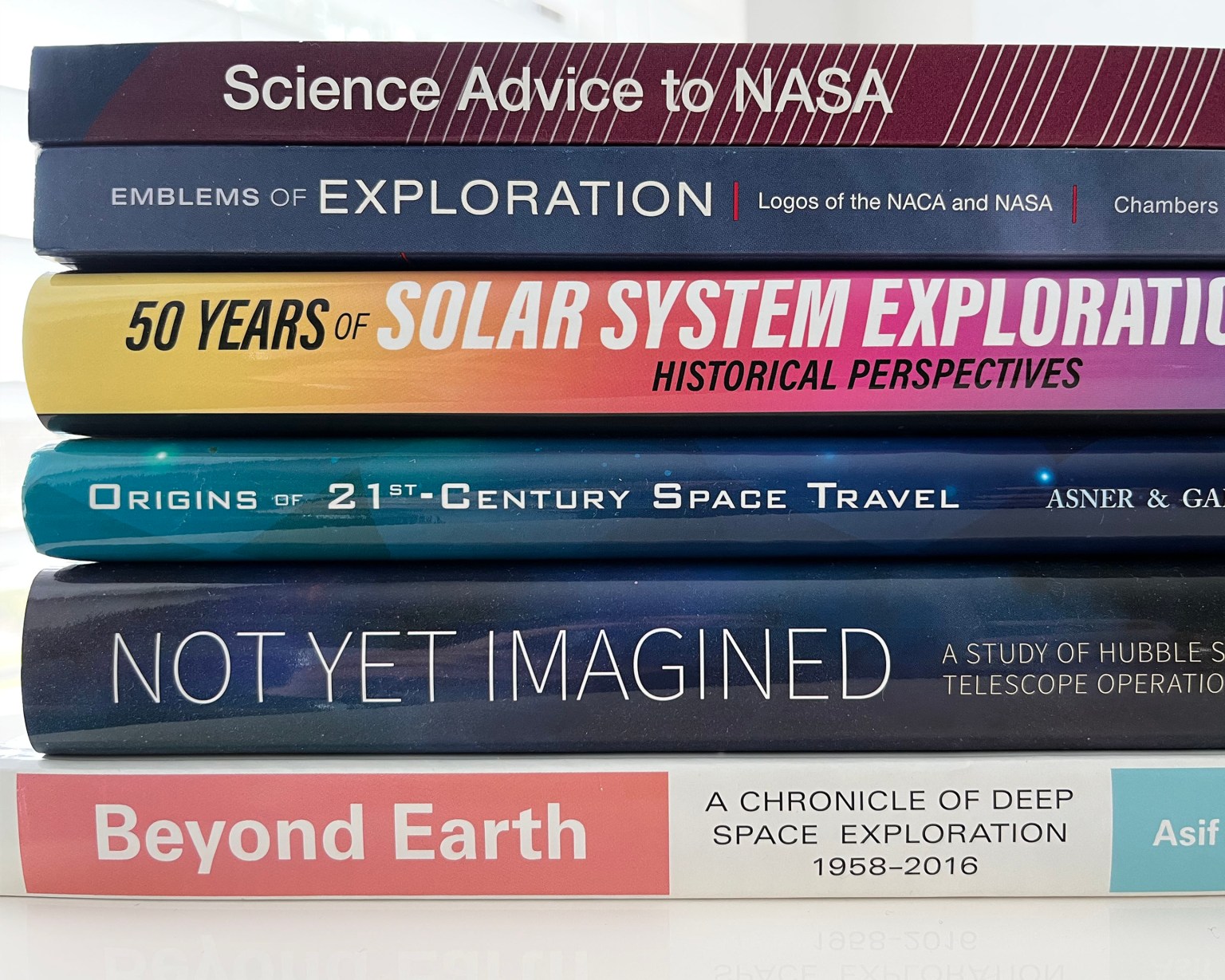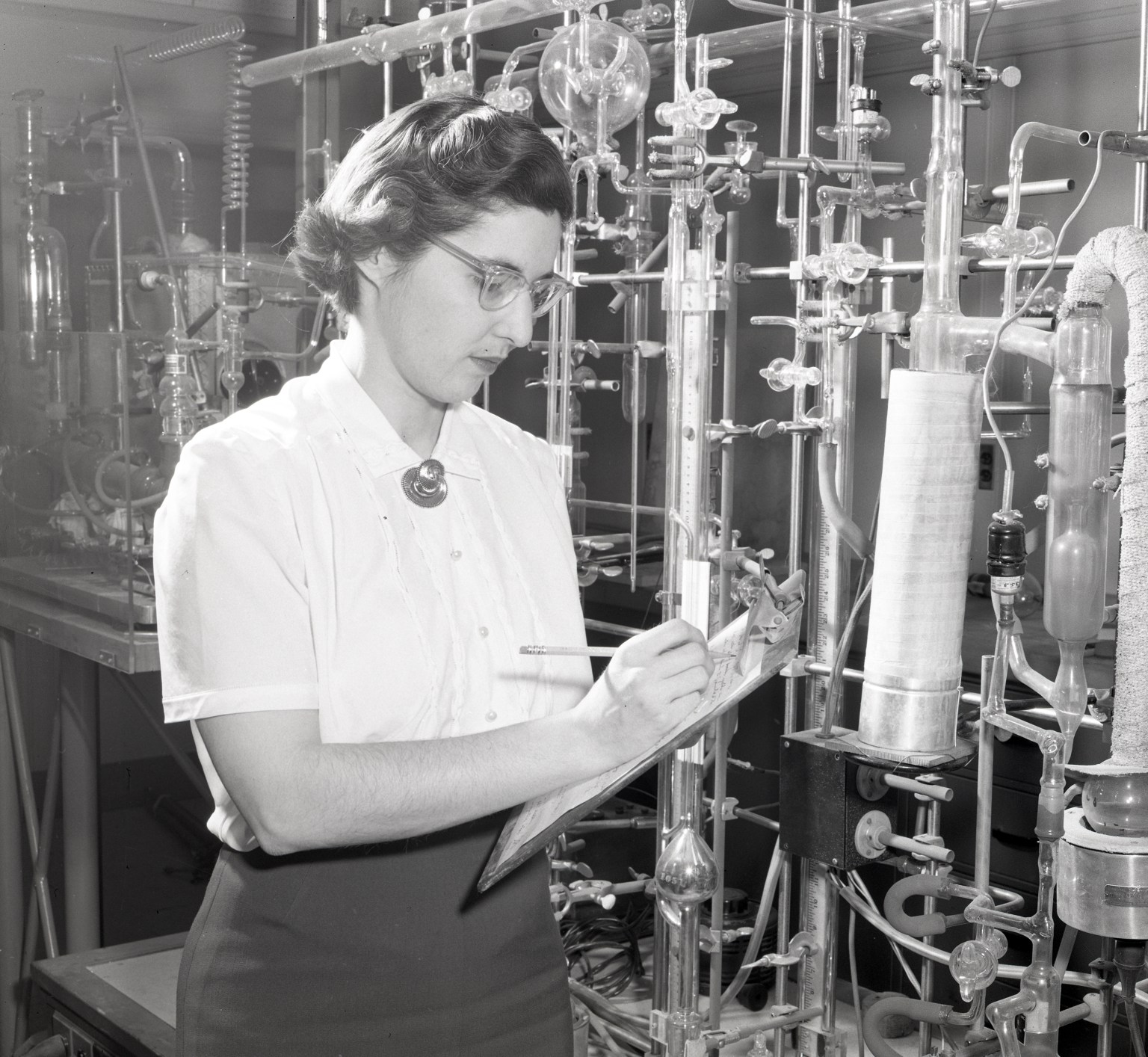Excerpt from an interview with Christopher C. Kraft, Jr., by Rebecca Wright
Houston, Texas
5 August 2014
Kraft: When you study aeronautical engineering in 1944, when I graduated, what we were studying was basic aerodynamics, basic physics, basic things that you would eventually use in aeronautical engineering. Our capabilities, our teachers, were not very versed in the problems of aeronautics of the time. There was a lot of reasons for that. A lot of the research was confidential, so they couldn’t know it. NACA reports were confidential, so we couldn’t know it. As an example, it was obvious that the use of wing sweep was going to be a major part of the future airplanes of that age, and all of that was confidential. The Germans were doing it. You could almost get as much data out of the German reports as you could NACA reports because if you had their reports, it was okay, but to have the NACA reports, you had to put them under lock and key….
Wright: NACA wasn’t your first choice to work.
Kraft: Yes. Back in those days, at NACA, test pilots were not very prevalent. NACA taught several of their aeronautical engineers to be test pilots. Jack [John P.] Reeder, who was one of the best test pilots NACA ever had, was just an aeronautical engineer in the full-scale tunnel, and they made him into a test pilot. Mel [Melvin N.] Gough was an aeronautical engineer. He had graduated from Johns Hopkins [University, Baltimore, Maryland], had a job at NACA and saw what was going on, resigned from NACA, went across the river, across Hampton Roads, to join the Navy to learn how to fly Navy airplanes, and came back to NACA as a test pilot, and eventually became their chief test pilot.
Those guys were not too unlike me. I was a young, wet-behind-the-ears aeronautical engineer and didn’t know tiddlywinks about airplanes. I was a baseball player. I wasn’t an engineer, and airplanes didn’t interest me. I’d been there all my life, watched them fly over me and go to the air shows and so forth, but I never was interested in airplanes. That professor at Virginia Tech got me interested in airplanes.
It was a great place to learn. NACA was a really great place to learn, and I’d learned about flying qualities that [Robert R.] Gilruth had written [Requirements for Satisfactory Flying Qualities of Airplanes, NACA Technical Report 755]. I went to class at night, at Hampton High School, had classes at night in various elements of aeronautical engineering. [William] Hewitt Phillips, who was my boss, taught flying qualities. I would go there two or three nights a week and learn what flying qualities was. I realized how great a man Gilruth was. He and Mel Gough had developed flying qualities, and that was the Bible for how to build an airplane from a standpoint of flying it, and it was the Bible of how to test an airplane.
The Army [Air Corps] and the Navy adopted that document as the basis upon which they were going to buy airplanes. That put me in the know on what all airplanes were. The significant fact that was a part of your teaching, and was knowledge, in NACA in those days, was everything was static. When you talked about the forces that operated on an airplane, you were talking about the static conditions. What were the balancing forces? You measured those forces in as static a condition as you possibly could. This was before anybody even thought about doing a dynamic analysis. You’d write the equations of motion for an airplane, it was just the static forces you were dealing with.
By a year or so after I got there, the biggest thing about the dynamics of an airplane was what is the time to damp to half-amplitude? You do a step input with the stick or with the rudder or with the ailerons and see what happened. You would see how it damped. In other words, if you pull back on the stick, if it damped in 1.5 cycles, that was the test. That was the only dynamic test.
Within a year, I was writing equations of motion in the airplane. It was all dynamics because it was obvious to NACA, particularly, that as you approached higher speeds, the dynamic aspects of the airplane were equally important as the static aspects of the airplane. All the wind tunnels, all the flight tests began to look at the flight dynamics, as opposed to balancing forces. Of course, that changed all the mathematic analysis, also.
Christopher C. Kraft, Jr.
From an aeronautical research engineer at NACA Langley Aeronautical Laboratory to NASA Johnson Space Center Director, learn about Chris Kraft's long NASA career.
Read his biography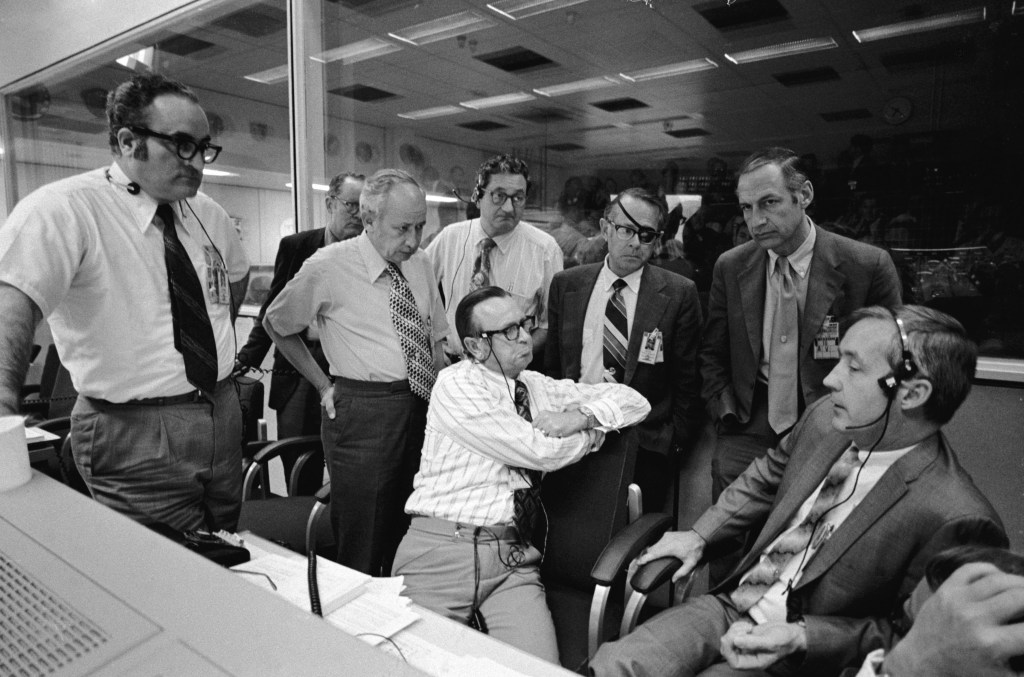
Kraft: I remember I was in Washington [DC], at an automatic stability and control meeting, and we read about it [Sputnik] in the paper, I think. Talked about it at the meeting. A couple of weeks later, I was up there when Vanguard [rocket] flew. I remember being in a taxi, and the taxi driver said, “Hear what happened this morning?”
I said, “No.”
“Had a rocket blow up down there at Cape Canaveral [Florida].” That was the Vanguard. Came up off the bed and exploded. That was the country’s first attempt to put up a satellite. It immediately got everybody thinking, well, in the first place, about orbital mechanics. I didn’t know a damn thing about orbital mechanics. Immediately got people thinking about highaltitude pressures and temperatures and ways of measuring the environment and ways of putting instruments into zero gravity in a perfect vacuum. Of course, people immediately—I wouldn’t say immediately, probably close to it—started thinking about, well, can man survive in that environment? Can he survive at zero gravity? How do you keep him alive? That’s a whole new ballgame.
Our high-speed airplanes that were going to 50-60,000 feet were using g-suits and pressure suits already, but not space suits. They had means of supporting the body from an acceleration point of view, and namely means of providing oxygen at the upper altitude, upper levels of where they were flying, up to 60-70,000 feet, but they didn’t have a space suit per se. It initially started out being g-suits as compared to space suits. The initial test pilots sucked on a tube to get oxygen before they had masks. Back when I first went to work, if you flew at 3540,000 feet, you did have a mask, but you also had a backup tube of oxygen. All the early test pilots used a tube in their mouth, but that progressed pretty rapidly, too.
The Army Air Corp was in the lead at Akron, Ohio, where they had a test facility. All that kind of equipment was being developed there, in consultation with the flight test people, where I was. That was a whole industry in itself. We began to think about what the problems were of stability and control, of reentry, of thermal protection that we hadn’t ever thought about before, and Gilruth and several of his engineers started thinking about how to put a man into space.
I remember that Chuck [Charles W.] Mathews—whom I worked with very closely in different things, and eventually he was in charge of what I was doing—four or five of them that started thinking about putting a man in space. The Air Force was thinking about it also; they called theirs the MIS Program, Man in Space Program. I was not in that group.
Chuck Mathews and Max [Maxime A.] Faget and Caldwell [C.] Johnson and Aleck [C.] Bond were all working for Gilruth in the Pilotless Aircraft Research Division, and he got a bunch of those guys to start working and thinking. Mathews was a very smart engineer, and so, Gilruth got him to come work on it. I knew that they were working on something about space, but I didn’t know any of the details until he asked me to go to work on it. As you discerned here, I was not very happy with being a mathematician, as compared to being an aeronautical engineer, or eventually, an aerospace engineer. That was a welcome request. I’d get the hell out of that math. I was good at it, but I didn’t enjoy it. I did not look forward to doing that the rest of my life.
As soon as I went to work there, I had at least 10 things to do every hour. Different requirements that dealt with tracking or communications or geography or control, and how was the body affected by it, how do we get information back, and how do we do that in real time? What could you do? That was where my thoughts immediately went.


























